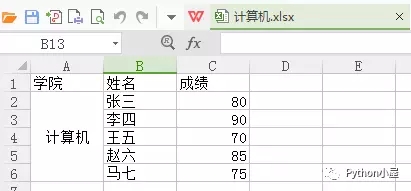Python中断言Assertion的一些改进方案
Python Assert 为何不尽如人意?
Python中的断言用起来非常简单,你可以在assert后面跟上任意判断条件,如果断言失败则会抛出异常。
>>> assert 1 + 1 == 2
>>> assert isinstance('Hello', str)
>>> assert isinstance('Hello', int)
Traceback (most recent call last):
File "<input>", line 1, in <module>
AssertionError
其实assert看上去不错,然而用起来并不爽。就比如有人告诉你程序错了,但是不告诉哪里错了。很多时候这样的assert还不如不写,写了我就想骂娘。直接抛一个异常来得更痛快一些。
改进方案 #1
一个稍微改进一丢丢的方案就是把必要的信息也放到assert语句后面,比如这样。
>>> s = "nothin is impossible."
>>> key = "nothing"
>>> assert key in s, "Key: '{}' is not in Target: '{}'".format(key, s)
Traceback (most recent call last):
File "<input>", line 1, in <module>
AssertionError: Key: 'nothing' is not in Target: 'nothin is impossible.'
看上去还行吧,但是其实写的很蛋疼。假如你是一名测试汪,有成千上万的测试案例需要做断言做验证,相信你面对以上做法,心中一定有千万只那种马奔腾而过。
改进方案 #2
不管你是你是搞测试还是开发的,想必听过不少测试框架。你猜到我要说什么了吧?对,不用测试框架里的断言机制,你是不是洒。
py.test
py.test 是一个轻量级的测试框架,所以它压根就没写自己的断言系统,但是它对Python自带的断言做了强化处理,如果断言失败,那么框架本身会尽可能多地提供断言失败的原因。那么也就意味着,用py.test实现测试,你一行代码都不用改。
import pytest
def test_case():
expected = "Hello"
actual = "hello"
assert expected == actual
if __name__ == '__main__':
pytest.main()
"""
================================== FAILURES ===================================
__________________________________ test_case __________________________________
def test_case():
expected = "Hello"
actual = "hello"
> assert expected == actual
E assert 'Hello' == 'hello'
E - Hello
E ? ^
E + hello
E ? ^
assertion_in_python.py:7: AssertionError
========================== 1 failed in 0.05 seconds ===========================
""""
unittest
Python自带的unittest单元测试框架就有了自己的断言方法self.assertXXX() ,而且不推荐使用assert XXX语句。
import unittest
class TestStringMethods(unittest.TestCase):
def test_upper(self):
self.assertEqual('foo'.upper(), 'FoO')
if __name__ == '__main__':
unittest.main()
"""
Failure
Expected :'FOO'
Actual :'FoO'
Traceback (most recent call last):
File "assertion_in_python.py", line 6, in test_upper
self.assertEqual('foo'.upper(), 'FoO')
AssertionError: 'FOO' != 'FoO'
"""
ptest
我非常喜欢ptest,感谢Karl大神写了这么一个测试框架。ptest中的断言可读性很好,而且通过IDE的智能提示你能轻松完成各种断言语句。
from ptest.decorator import *
from ptest.assertion import *
@TestClass()
class TestCases:
@Test()
def test1(self):
actual = 'foo'
expected = 'bar'
assert_that(expected).is_equal_to(actual)
"""
Start to run following 1 tests:
------------------------------
...
[demo.assertion_in_python.TestCases.test1@Test] Failed with following message:
...
AssertionError: Unexpectedly that the str <bar> is not equal to str <foo>.
"""
改进方案 #3
不仅仅是你和我对Python中的断言表示不满足,所以大家都争相发明自己的assert包。在这里我强烈推荐assertpy 这个包,它异常强大而且好评如潮。
pip install assertpy
看例子:
from assertpy import assert_that
def test_something():
assert_that(1 + 2).is_equal_to(3)
assert_that('foobar')\
.is_length(6)\
.starts_with('foo')\
.ends_with('bar')
assert_that(['a', 'b', 'c'])\
.contains('a')\
.does_not_contain('x')
从它的主页文档上你会发现它支持了几乎你能想到的所有测试场景,包括但不限于以下列表。
Strings
Numbers
Lists
Tuples
Dicts
Sets
Booleans
Dates
Files
Objects
而且它的断言信息简洁明了,不多不少。
Expected <foo> to be of length <4>, but was <3>. Expected <foo> to be empty string, but was not. Expected <False>, but was not. Expected <foo> to contain only digits, but did not. Expected <123> to contain only alphabetic chars, but did not. Expected <foo> to contain only uppercase chars, but did not. Expected <FOO> to contain only lowercase chars, but did not. Expected <foo> to be equal to <bar>, but was not. Expected <foo> to be not equal to <foo>, but was. Expected <foo> to be case-insensitive equal to <BAR>, but was not.
在发现assertpy之前我也想写一个类似的包,尽可能通用一些。但是现在,我为毛要重新去造轮子?完全没必要!
总结
断言在软件系统中有非常重要的作用,写的好可以让你的系统更稳定。Python中默认的断言语句其实还有一个作用,如果你写了一个类型相关的断言,IDE会把这个对象当成这种类型,这时候智能提示就有如神助。
要不要把内置的断言语句换成可读性更好功能更强大的第三方断言,完全取决于实际情况。比如你真的需要验证某个东西并且很关心验证结果,那么必须不能用简单的assert;如果你只是担心某个点可能有坑或者让IDE认识某个对象,用内置的assert既简单又方便。
所以说,项目经验还是蛮重要的。以上就是本文的全部内容,希望本文的内容对大家的学习或者工作能有所帮助,如果有疑问大家可以留言交流。

